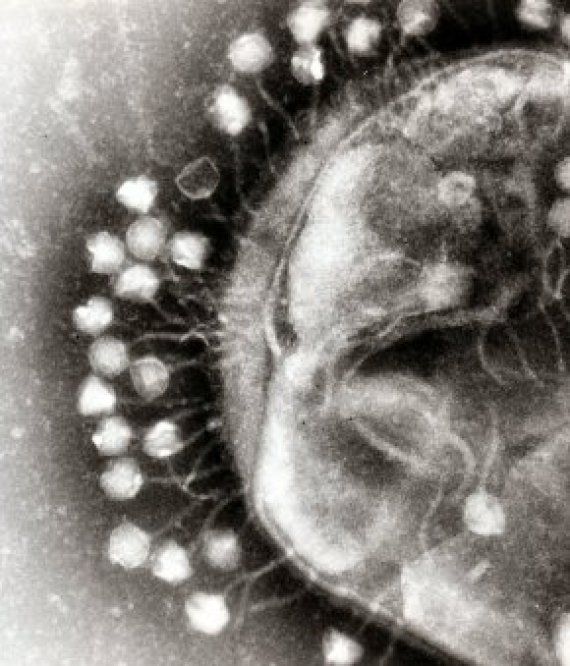A bacteria (right) is attacked by specialized virusses. (Credit)
This system ‘remembers’ viruses it has encountered before by building pieces of virus DNA into its bacterial genome. Then the next time a bacterium is infected by one of its old enemies, it recognizes the DNA fragment and attacks it straightaway.
It is useful for viruses to be able to go about their business unnoticed. Spontaneous changes in the DNA fragments which betray their presence are therefore positive traits in their evolution process. A changed code makes it seem to bacteria as though they have been infected by a new virus, prevented them from responding as fast. At least, this was the expectation.
A team of Wageningen microbiologists has now demonstrated that it is not easy for viruses, once identified, to operate incognito again. Even if they change one third of the over 30 ‘letters’ of the DNA fragment, a bacterium can still recognize them, although the chances of it doing so get steadily smaller. It turns out that alerted bacteria adjust their ‘virus scanners’ by building the changed DNA fragment into their genome. That way they still have the evolved virus on their radar.
Virus DNA
The Wageningen scientists discovered this by systematically studying whether bacteria recognized old enemies. To do this, they introduced bits of virus DNA into a large number of micro-organisms, with increasing numbers of letters differing from the original in their genome. The researchers then looked to see whether the piece of DNA they had introduced had been disposed of.
The microbiologists call their results a nice step towards a deeper understanding of the CRISPR system. ‘We already knew a lot about bacteria’s short-term memory,’ says Stan Brouns, assistant professor at Microbiology. ‘But we now see that they also have a long-term memory which enables them to recognise viruses which have changed considerably.’ The point of all the old DNA fragments they found in bacteria genomes becomes clear too. The big question now is how exactly bacteria update their virus scanners.
The article appears in the journal PNAS on 7 April.

